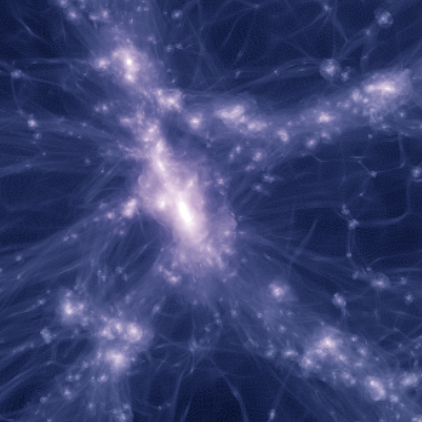- UV Luminosity Function
- Star formation rate function
- Stellar mass function
- Scatter in stellar mass vs. SFR
UV Luminosity Function
If we have a UV luminosity function, a connection between UV luminosity and star formation rate, and a relation between star formation rate and stellar mass, we can estimate a stellar mass function.
Consider a UV luminosity function
\(\Phi(M_{UV}) \equiv \frac{dn}{d M_{UV}}\)
with units Mpc\(^{-3}\) mag\(^{-1}\),
such that the galaxy number density is
\(n(<M_{UV}) = \int_{-\infty}^{M_{UV}} \Phi(M_{UV})dM_{UV}.\)
Star formation rate function
To convert the UV luminosity function into a star formation rate function, we need to have some connection between $M_{UV}$ and SFR.
Here, we will take \(L_{UV}\) to be the monochromatic UV luminosity
with units ergs s\(^{-1}\) Hz\(^{-1}\). The connection between
star formation rate and \(L_{UV}\) is often written in the form
\(\log_{10}\left[\frac{SFR}{M_{\odot}~\mathrm{yr}^{-1}}\right] = \log_{10}
\left(\nu L_{UV}\right) + A_{SFR,UV} \equiv \log_{10} L_{UV} + B_{SFR,UV}\)
assuming that \(\nu\) corresponds to the monochromatic frequency
that defines what we mean by “UV”. \(A_{SFR,UV}\) and \(B_{SFR,UV}\)
are constants. Throughout, I’ll implicitly divide by \(M_{\odot}~\mathrm{yr}^{-1}\) or \(M_{\odot}\) such that the
arguments of logarithms are unit free.
We can work in magnitudes rather than luminosity by noting
that
\(L_{UV} = D_{UV} 10^{-0.4 M_{UV}}\)
where \(D_{UV}\) is some constant. If \(SFR\propto L_{UV}\) as above,
then we just have
\(\log_{10} SFR = -0.4 M_{UV} + C_{SFR}\)
or
\(d\log_{10} SFR = -0.4 dM_{UV}\)
or
\(\frac{dM_{UV}}{d\log_{10} SFR} = -2.5 [\frac{\mathrm{mag}}{\mathrm{dex}}].\)
We can then write the SFR function as
\(\frac{dn}{d\log_{10} SFR} = \frac{dn}{dM_{UV}} \frac{dM_{UV}}{d\log_{10}SFR}.\)
Stellar mass function
If we assume a one-to-one correlation between star formation rate and stellar mass, then it’s straightforward to convert between the SFR rate to the stellar mass function.
Let’s assume a connection between star formation rate and
stellar mass of
\(\log_{10} SFR = \gamma \log_{10} M_{\star} + K_{SFR,\star}\)
or
\(\frac{d\log_{10} SFR}{d\log_{10} M_{\star}} = \gamma.\)
The units are \([\mathrm{dex}/\mathrm{dex}]\), or no units!
We then have the stellar mass function as
\(\frac{dn}{d\log_{10} M_{\star}} = \frac{dn}{dM_{UV}} \frac{dM_{UV}}{d\log_{10}SFR} \frac{d\log_{10}SFR}{d\log_{10} M_{\star}}.\)
This function has units of Mpc\(^{-3}\) dex\(^{-1}\).
Scatter in stellar mass vs. SFR
Imagine we have a population of galaxies that have a distribution
of star formation rate and stellar mass. We could then write
that distribution as
\(\frac{d^2 n}{d\log_{10}SFR~d\log_{10}M_{\star}}\)
such that
\(\frac{dn}{d\log_{10}M_{\star}} = \int_{SFR} \frac{d^2 n}{d\log_{10}SFR~d\log_{10}M_{\star}} d\log_{10} SFR\)
But we can relate the joint distribution of SFR and
stellar mass \(\frac{d^2 n}{d\log_{10}SFR~d\log_{10}M_{\star}}\)
to the conditional distribution of stellar mass given
star formation rate \(p(\log_{10}M_{\star}|\log_{10}SFR)\)
as
\(\frac{dn}{d\log_{10} M_{\star}} = \int_{-\infty}^{\infty} \frac{dn}{d\log_{10}SFR} p(\log_{10}M_{\star}|\log_{10}SFR) d\log_{10}SFR\)
Note that \(p(d\log_{10}M_{\star}|d\log_{10}SFR)\) could be,
e.g., a gaussian in \(d\log_{10}M_{\star}\) normalized
such that
\(\int_{\log_{10}M_{\star}}p(\log_{10}M_{\star}|\log_{10}SFR) d\log_{10}M_{\star} = 1.\)
